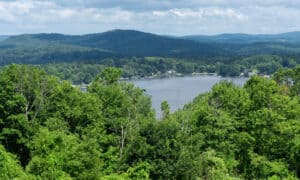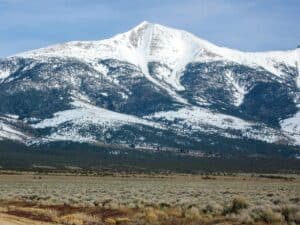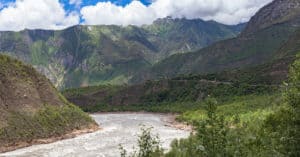In the beautiful and scenic state of Kentucky, the highest point you can reach is that of Black Mountain, sometimes called Big Black Mountain or Katahrin’s Mountain. It is 4145 feet above sea level and has a ground-to-highest peak measurement of 2500 feet. The Black Mountain is located in Harlan County, KY, and is near Appalachia, Virginia. It is possible to hike from Appalachia to Black Mountain, and on a clear day, the Great Smoky Mountains in Tennessee and North Carolina can be seen.
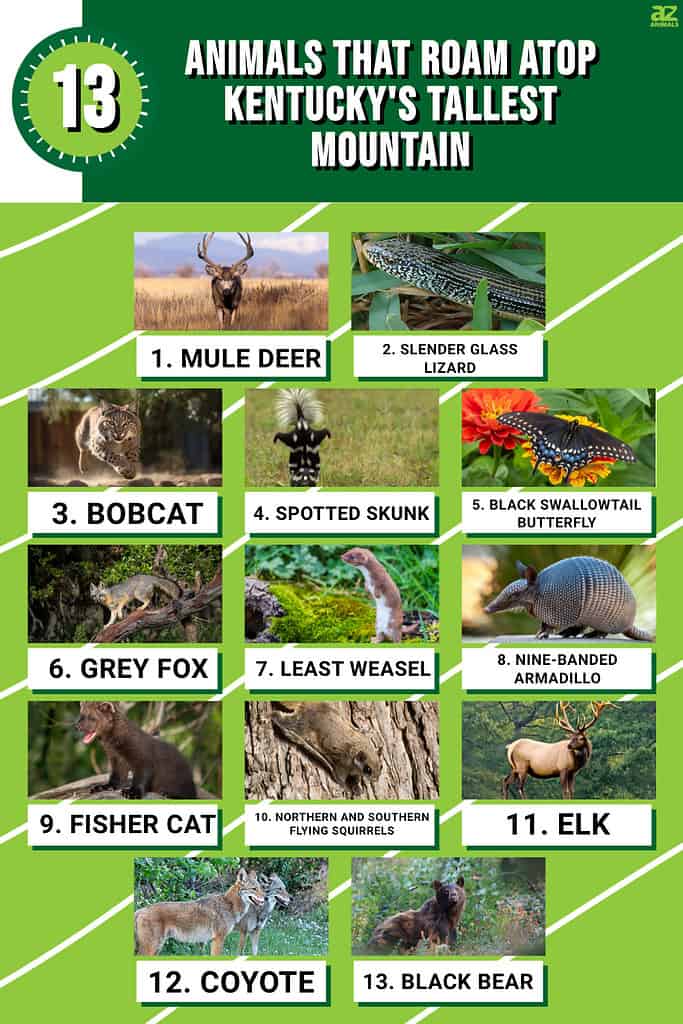
Black Mountain is no stranger to humans and mining. The mountain has been mined for coal for many years using mountaintop removal methods. After the state of Kentucky purchased the mineral and timber rights for the mountain, coal mining companies were no longer in charge, and the area was once again safe. During the time when the coal mining company, Penn Virginia Resources, owned the mountain, a waiver had to be signed and kept on your person while hiking, or you could be arrested for trespassing. The Commonwealth of Kentucky now owns the rights to the land, and a waiver is no longer needed. Enough about coal mining and geography. Let’s talk about the types of wildlife you will see at Kentucky’s highest point; the summit of Black Mountain. It is fairly diverse and offers a great deal of coverage and nutrients to provide an excellent habitat for mammals, amphibians, reptiles, birds, and other creatures. Some of these animals are rare and are only found at the summit.
Fauna of Black Mountain
1. Mule Deer (Odocoileus hemionus)
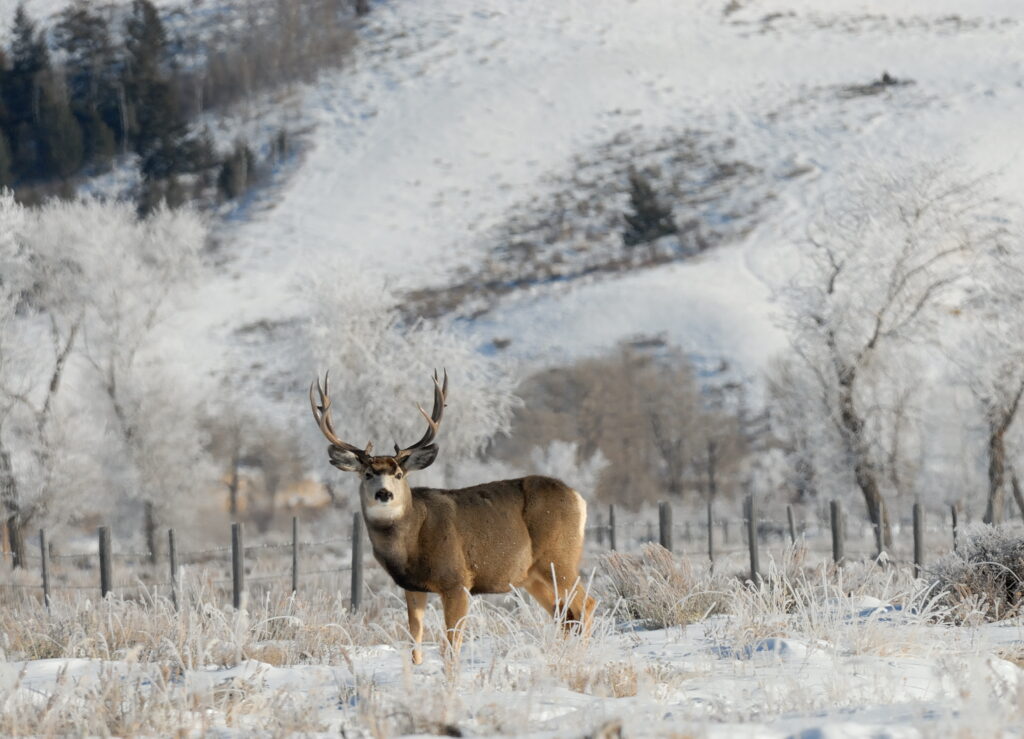
Mule and white-tailed deer frequent the steep grade of the Black Mountain’s summit.
©Kirk Geisler/Shutterstock.com
Appearance: Tannish brown upper with a white underbelly, tail, and under neck. Large ears shaped like a mule’s, a black mask on the forehead, and a grey face
Size: 120 – 330 pounds, 3.9 – 6.9 feet long
Habitat: Anywhere on Black Mountain
Diet: Fresh shoots on shrubs and trees and branches on some bushes. They are picky eaters and don’t just eat grass like white-tailed deer.
Lifespan: 9 – 11 years in the wild
Mule deer are similar to white-tailed deer, except they are a bit larger. They also tend to be a bit pickier about what they eat. Mule deer are located throughout the United States, just like white-tailed deer. The most common mule deer type is the black-tailed deer. The other mule deer have an entirely white tail, which is a way you can distinguish them from the white-tailed deer. White-tailed deer have a brownish-tan upper and a white underside to their tails.
2. Slender Glass Lizard (Ophisaurus attenuatus)
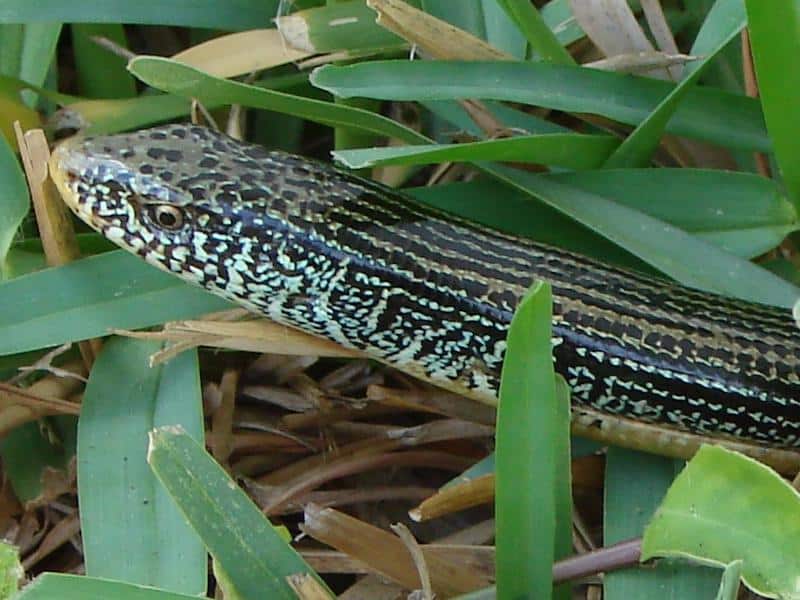
Glass Lizards are a bit confusing to the untrained eye since they look like snakes instead of lizards. One thing that sets them apart from snakes is their moveable eyelids.
©Fl295, Public domain, via Wikimedia Commons – License
Appearance: Legless, yellow to brown bodies with six stripes and a middorsal stripe. Sometimes other stripes form from the white speckles on the lizard’s body.
Size: 33 inches long
Habitat: Hidden under logs, leaves, and in tall grass
Diet: Insects; grasshoppers, crickets, beetles and sometimes spiders, rodents, and snails.
Lifespan: 10 – 30 years in the wild
The slender glass lizard is a confusing creature. It looks and moves like a snake, but because of its moveable eyelids and ears, it is indeed a lizard. Like some other lizards, if these creatures feel the slightest bit threatened, they can drop their tail as a self-defense tactic to confuse their predators and escape. They regrow their tails, but most species people see in the wild are missing their tails.
3. Bobcat (Lynx rufus)
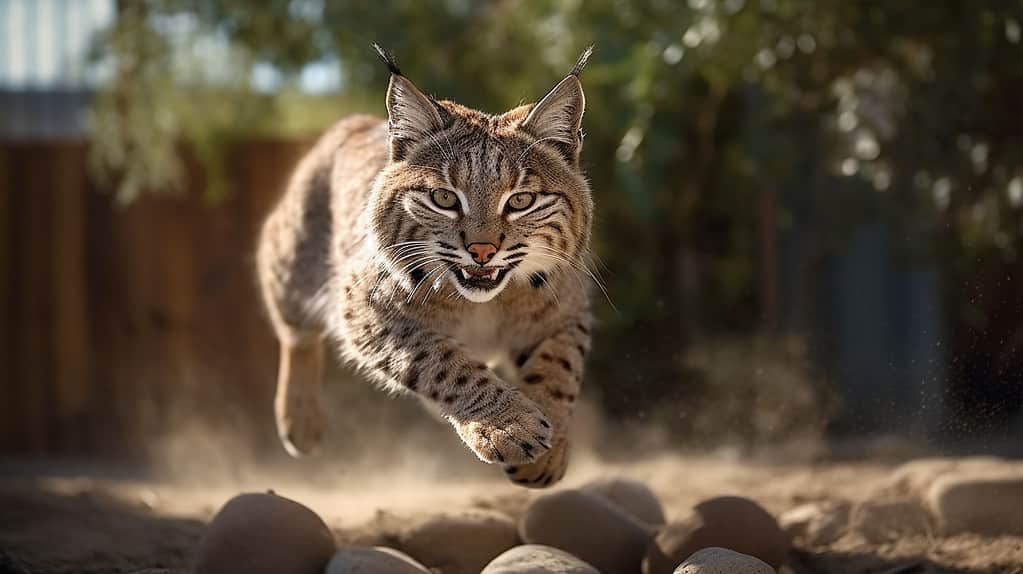
Appearance: Tannish brown upper with a lighter beige underbelly, black spots throughout, and black and white tips on the ears. They also have white highlights on their face and neck.
Size: 9 – 40 pounds, 28 – 47 inches long
Habitat: Anywhere on Black Mountain
Diet: Small and medium-sized mammals, rodents, and sometimes small deer
Lifespan: 10 years in the wild
4. Spotted Skunk (Spilogale putorius)
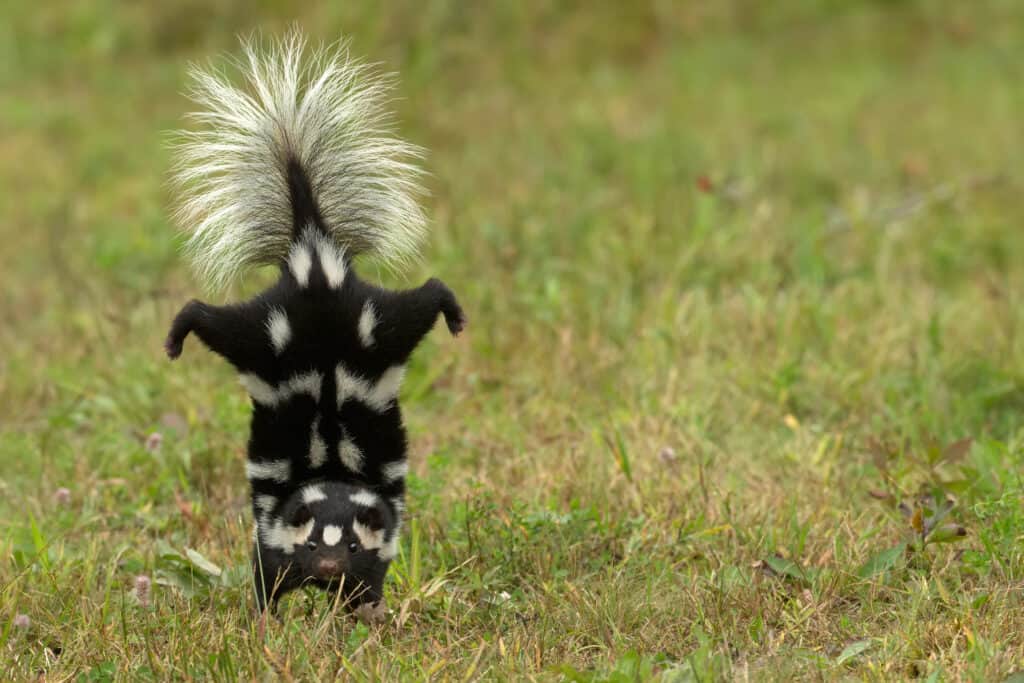
A spotted skunk will often perform handstands as a warning before spraying.
©Agnieszka Bacal/Shutterstock.com
Appearance: Black with white spots in a pattern, and the hair on their tail is completely white
Size: 14 – 18 inches, 1.3 pounds
Habitat: Brush, woodlands, grassy areas
Diet: Insects; beetles, grasshoppers, crickets, carrion, birds, eggs, frogs, lizards, fruits, and garbage
Lifespan: 10 years in the wild
The spotted skunk is on the decline due to their habitat shrinking. They are much less frequently seen than the common striped skunk. The female spotted skunks can be social and live with other females until it has babies. They are otherwise territorial and prone to fighting. However, they don’t spray each other.
5. Black Swallowtail Butterfly (Papilio polyxenes)
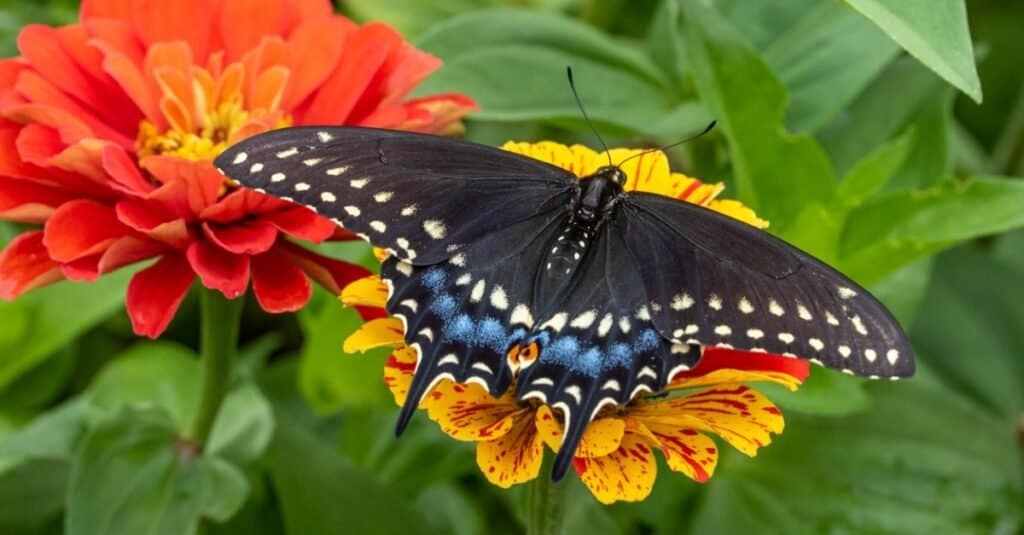
A black swallowtail
butterfly
feeds from flowers it finds growing on plants and bushes on the Black Mountain.
©Melody Mellinger/Shutterstock.com
Appearance: Black wings with white and some blue speckles. The males have more yellow and less blue on their wings. Similar to the swallowtail bird, the butterflies have similar “tail feathers.”
Size: 5.5 – 7 inches
Habitat: Favorite plants and flowers
Diet: A wide variety of flowers
Lifespan: 5 – 9 days as a butterfly
The swallow-tail butterfly is commonly seen throughout Black Mountain and frequents the summit. These butterflies have longer lives than some other butterflies, though it greatly depends on the weather and predators. The caterpillar is white, yellow, and black striped and can be found on preferred vegetation.
6. Grey Fox (Urocyon cinereoargenteus)
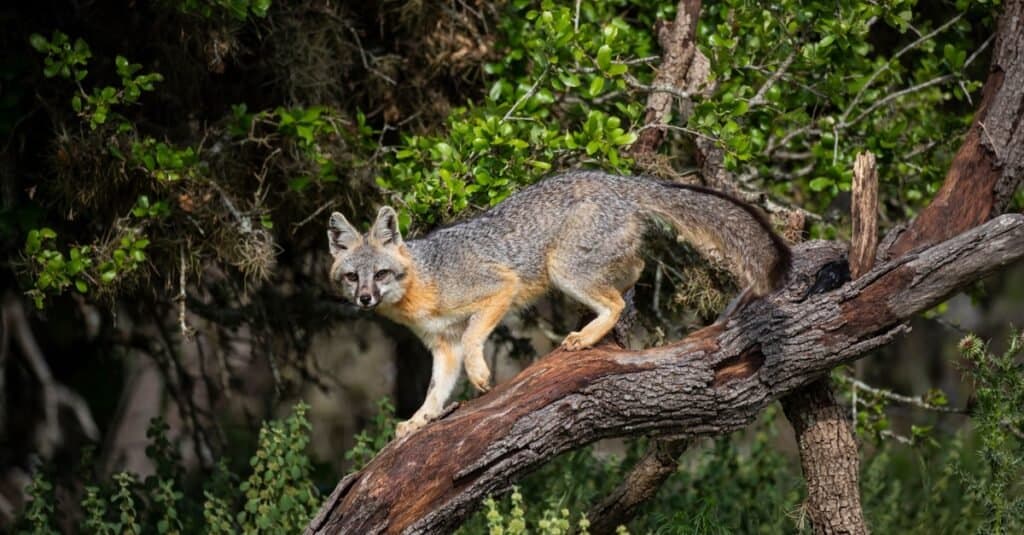
The gray fox can be found all over the United States, from rural areas to secluded mountainsides.
©Danita Delimont/Shutterstock.com
Appearance: Tannish brown upper with a white underbelly, tail, and under neck. Large ears shaped like a mule’s, a black mask on the forehead, and a grey face
Size: 7 – 13 pounds, 40 inches long
Habitat: Woodland or brush but hunts in fields and meadows
Diet: Rodents, small to medium-sized mammals, insects, birds, vegetables, and local fruit.
Lifespan: 14 – 15 years in the wild
The grey fox can be found throughout the United States and frequents areas that have little human traffic, like Black Mountain. They are able to hunt without much in the way of predators and blend in perfectly with the white oak forests. During mating season, you may hear the cry of a female in heat looking for a mate. It sounds very similar to that of a human screaming.
7. Least Weasel (Mustela nivalis)

The least weasel wins the award for the tiniest, cutest mammal at the Black Mountain summit.
©Stephan Morris/Shutterstock.com
Appearance: Reddish-brown upper with a white underbelly and under the neck. Small rodent-like face, small round ears, and dark beady eyes
Size: 6 – 10 inches long
Habitat: Forests and woodlands with rocky slopes
Diet: Mice, voles, birds, eggs, fish, frogs, salamanders, and insects
Lifespan: 7 – 8 years
The least weasel may be very small, but they are vicious predators and take down prey that seems too large for them. They hunt quickly and efficiently, making them very good hunters. Similar to ferrets, these small weasels are known to eat fruit, berries, insects, and pretty much any small animal they can fit in their mouths.
8. Nine-Banded Armadillo (Dasypus novemcinctus)
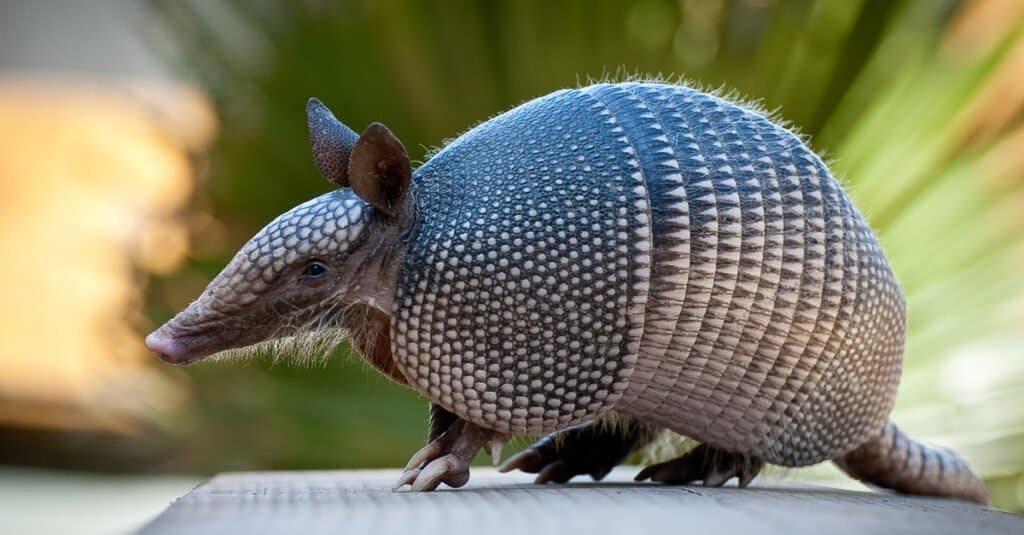
Unlike three-banded armadillos, nine-banded armadillos cannot roll into a ball. However, they can float on water by inflating their intestines or sinking to run across riverbeds.
©Heiko Kiera/Shutterstock.com
Appearance: Brownish-grey bony armor covers their body, small pointed faces with some course hair sprouting from their chins. Their feet are mostly made up of huge claws for digging.
Size: 5 – 14 pounds, 15 – 24 inches long, not including tail
Habitat: Anywhere on Black Mountain
Diet: Insects, beetles, worms, fruit, and bird eggs
Lifespan: 12 – 15 years in the wild
Armadillos are crafty and can easily adapt to most any living circumstances and climate. They are fantastic little nocturnal hunters and can be seen through most of the western and southern United States. These small beings are almost blind, so they tend to stumble around at night, running quickly from spot to spot and digging until they find what they are looking for. They also walk on their toenails like stilts.
9. Fisher Cat (Pekania pennanti)
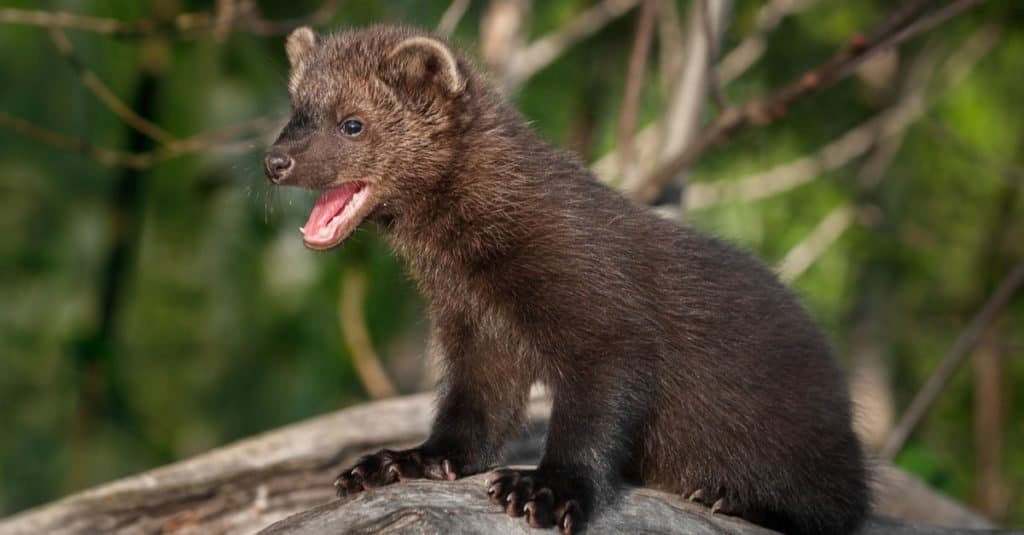
Young Fisher cats learn to hunt insects and small mice, then work their way up to bigger prey and can even take down a
porcupine
.
©Holly Kuchera/Shutterstock.com
Appearance: Dark brown upper with black legs and tail.
Size: 8 – 10 pounds, body length of 20 – 25 inches long with a tail 13 – 17 inch tail
Habitat: Wooded areas, brush, near waterways
Diet: Birds, eggs, frogs, lizards, rodents, poultry, carrion, cats, and garbage
Lifespan: 10 years in the wild
Fishers are also found all over the country, though they are seldom seen. They are related to minks and prefer to stick to wooded areas of hardwood forests. Tall grasses and brush help them hide and stalk their prey. These small creatures are extremely aggressive though very few have attacked a human unless provoked.
10. Northern and Southern Flying Squirrels (Glaucomys sabrinus) and (Glaucomys volans)
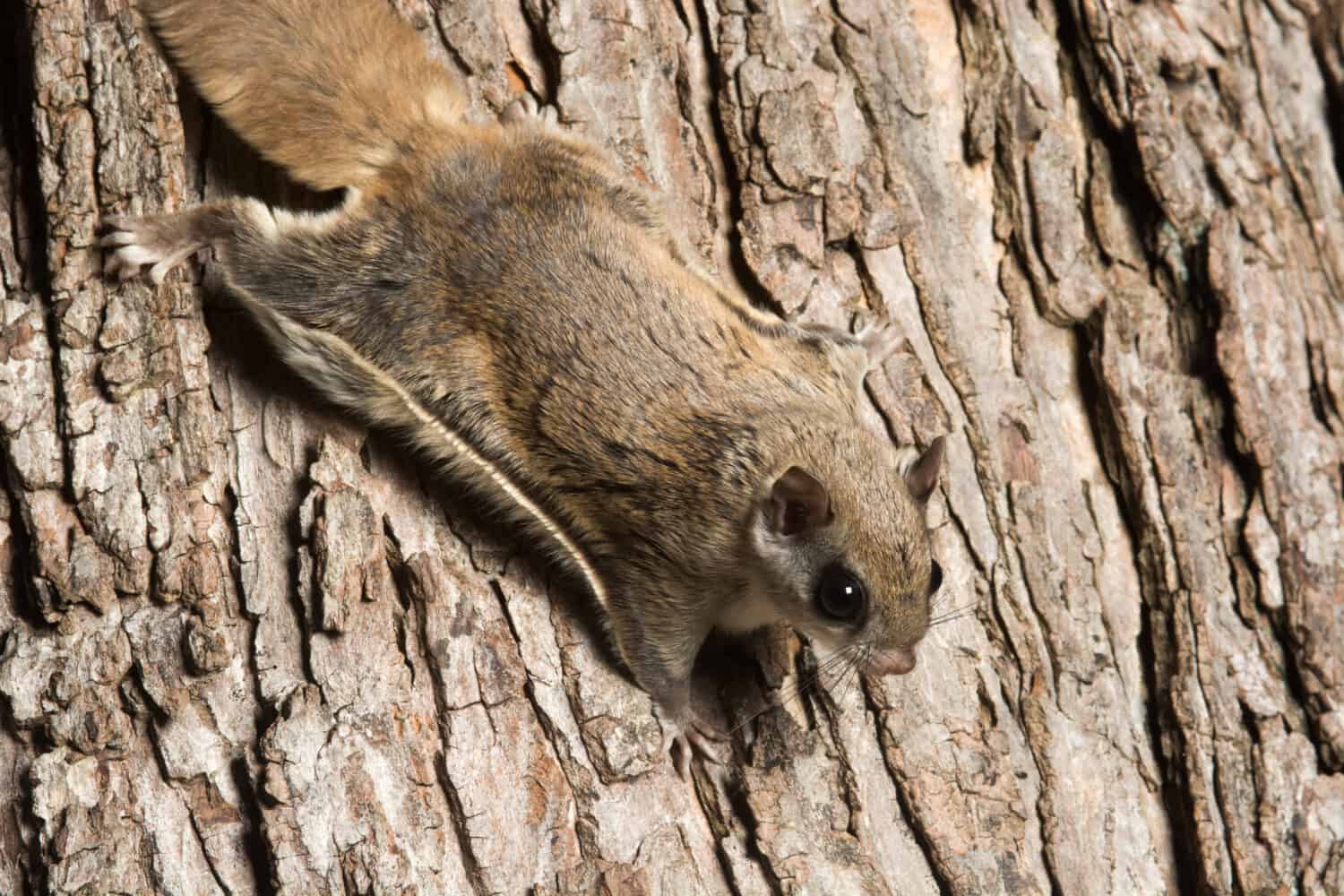
The flying squirrel’s huge adorable eyes help them see where they are going at night when they are most active.
©Tony Campbell/Shutterstock.com
Appearance: Tannish brown upper with white or beige underbelly and grey tail. Large marble-like eyes and a body shape of a square when they are in flight.
Size: 8 – 10 inches long, not including the 3 – 4 inch tail
Habitat: The trees of the hardwood forest on Black Mountain
Diet: Tree nuts, fruit, insects
Lifespan: Up to 13 years in the wild
Flying squirrels are small but mighty gliders who can easily escape becoming prey by gliding to a different tree. They made their homes in small holes in trees and sleep during the day. Squirrels are opportunistic hunters, meaning they will eat many things if the timing is right. They are very timid and rarely seen.
11. Elk (Cervus canadensis)
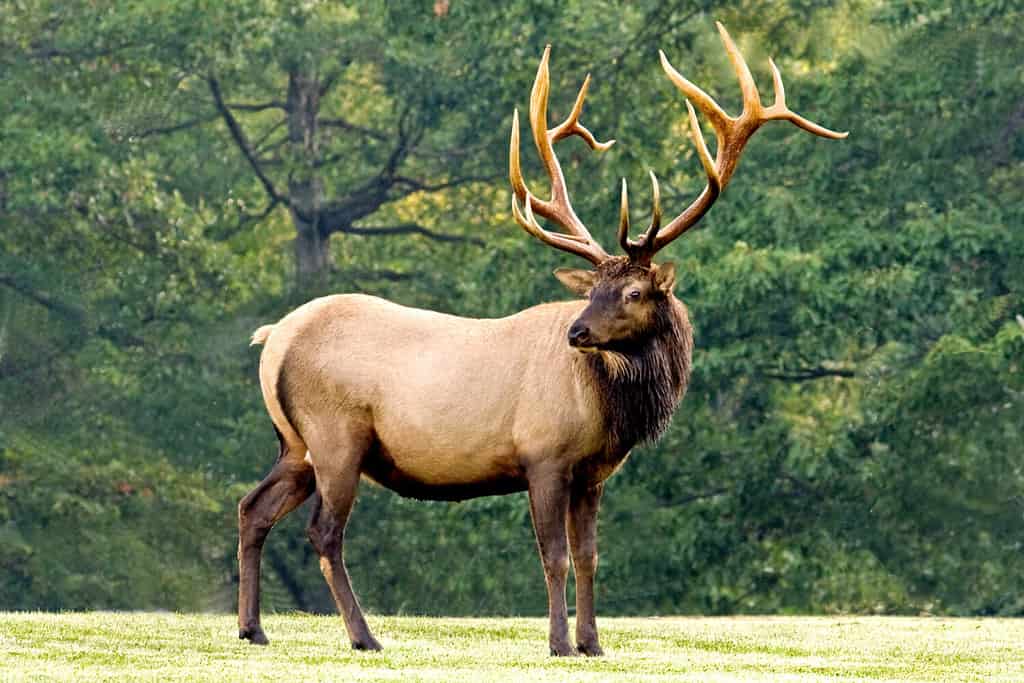
©Paul Staniszewski/Shutterstock.com
Appearance: Tannish brown upper with a darker, shaggy mane, black and dark brown on their face and legs, and powerful legs
Size: 500 – 750 pounds, 4 – 5 feet at the shoulder
Habitat: Anywhere on Black Mountain
Diet: Fresh shoots on shrubs and trees and branches on some bushes. Grass, bark from trees, and some berries.
Lifespan: 10 – 13 years in the wild
Elk were originally alive and well in KY before being hunted out of existence in the 1880s. More elk have been brought in from the Rocky Mountains, and their numbers have been climbing since. These large animals are still hunted in KY but under strict regulations and tagging laws. The area is home to 14,000 now and counting. They have no real predators besides humans on the Black Mountain.
12. Coyote (Canis latrans)
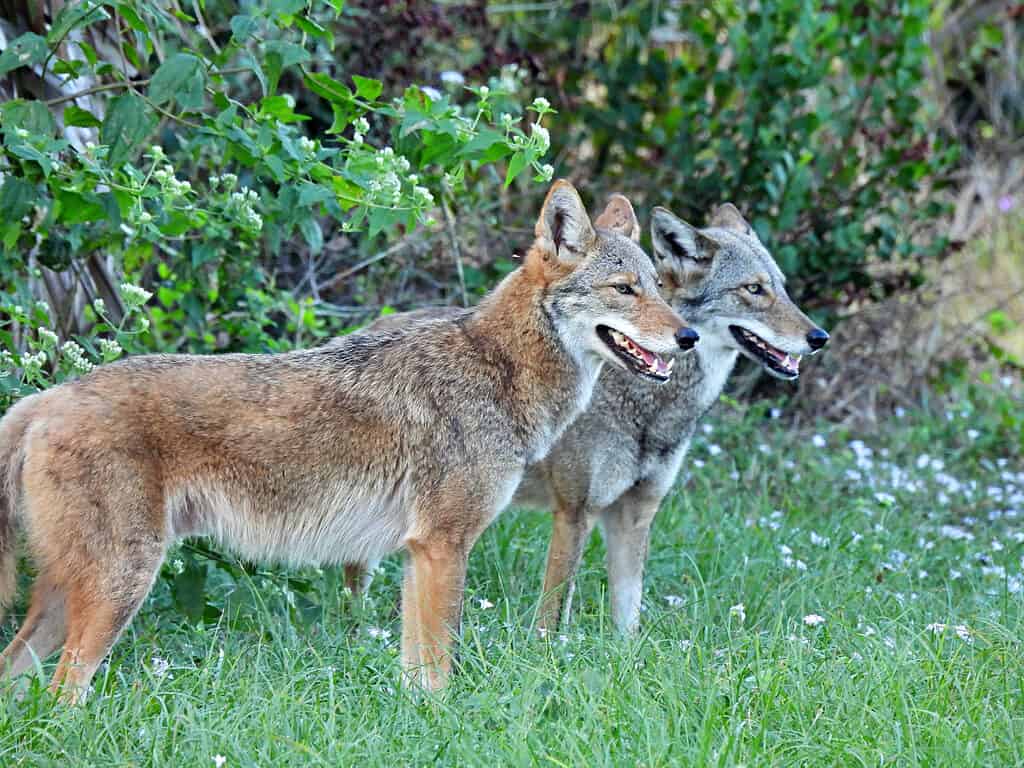
Coyotes are everywhere in the United States and can sometimes be seen in a small group yapping and howling together.
©iStock.com/passion4nature
Appearance: Grey, brown, black, and white fur makes up their coats. They have brown muzzles, brown legs, lighter-colored undersides, and white around their muzzle and neck
Size: 15 – 50 pounds, 1.9 – 2.5 feet tall at the shoulder
Habitat: Anywhere on Black Mountain
Diet: Small to medium-sized mammals but may occasionally take down small deer, birds, lizards, frogs, and insects
Lifespan: 10 – 14 years in the wild
Coyotes live all over. They frequent urban areas due to a lack of habitat and are also found in the wooden and mountainous areas of the United States. These canines will eat just about anything and aren’t afraid to steal food from other coyotes or even bears. They are fast and cunning, which makes them an excellent predator on the Black Mountain.
13. Black Bear (Ursus americanus)
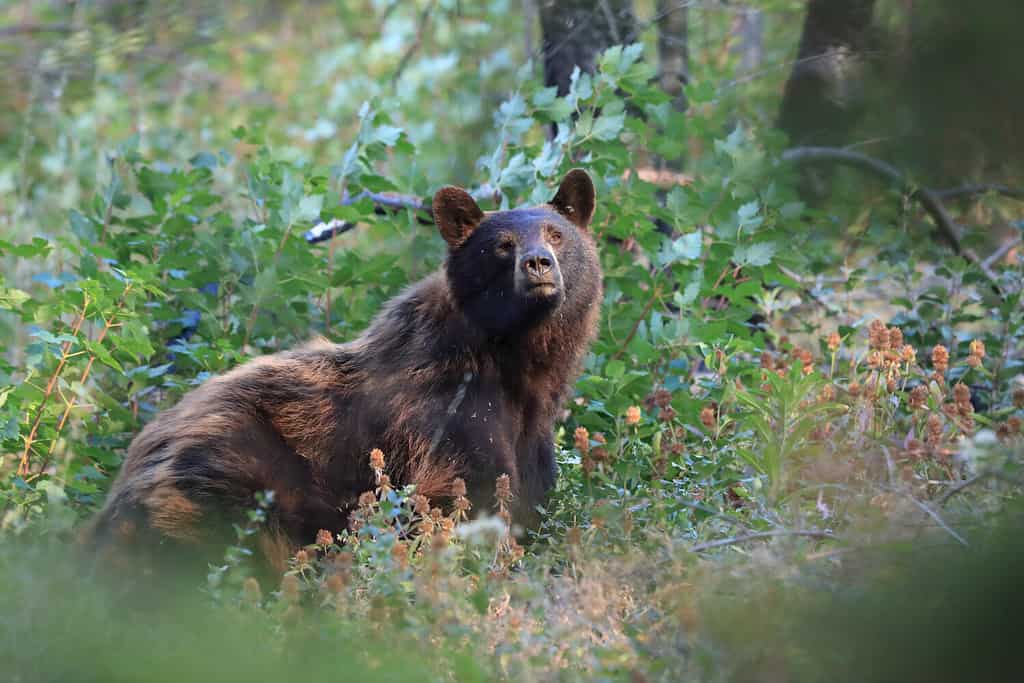
Black bears are abundant in the Appalachian mountain range, which includes Black Mountain.
©Greens and Blues/Shutterstock.com
Appearance: Dark brown to black thick fur, large round ears, large claws, and teeth
Size: 130 – 700 pounds, 3.9 – 6.9 feet long
Habitat: Anywhere on Black Mountain
Diet: Fresh shoots on shrubs and trees and branches on some bushes. Berries of any sort that’s edible, insects, frogs, fish, carrion, lizards, bird eggs, and garbage
Lifespan: Up to 30 years in the wild
Black bears are food and nose driven. They can’t turn down a good meal and that’s what gets them in trouble with humans so frequently. Kentucky has a large black bear population, and on Black Mountain, it’s the perfect habitat for them to thrive. They have plenty of food choices and lots of hiding places. Bears sleep in dens, and the mountains are great for offering rocky terrain to make that come true. They do climb trees, especially to get rid of danger, and the Black Mountain offers a vast hardwood forest.
Summary of the Animals That Roam Kentucky’s Tallest Mountain
Here are the Animals That Roam Kentucky’s Tallest Mountain:
| Rank | Animals |
|---|---|
| 1 | Mule Deer (Odocoileus hemionus) |
| 2 | Slender Glass Lizard (Ophisaurus attenuatus) |
| 3 | Bobcat (Lynx rufus) |
| 4 | Spotted Skunk (Spilogale putorius) |
| 5 | Black Swallowtail Butterfly (Papilio polyxenes) |
| 6 | Grey Fox (Urocyon cinereoargenteus) |
| 7 | Least Weasel (Mustela nivalis) |
| 8 | Nine-Banded Armadillo (Dasypus novemcinctus) |
| 9 | Fisher Cat (Pekania pennanti) |
| 10 | Northern and Southern Fly Squirrels (Glaucomys sabrinus) and (Glaucomys volans) |
| 11 | Elk (Cervus canadensis) |
| 12 | Coyote (Canis latrans) |
| 13 | Black Bear (Ursus americanus) |
Flora of Black Mountain
Hobblebush (Viburnum lantanoides)
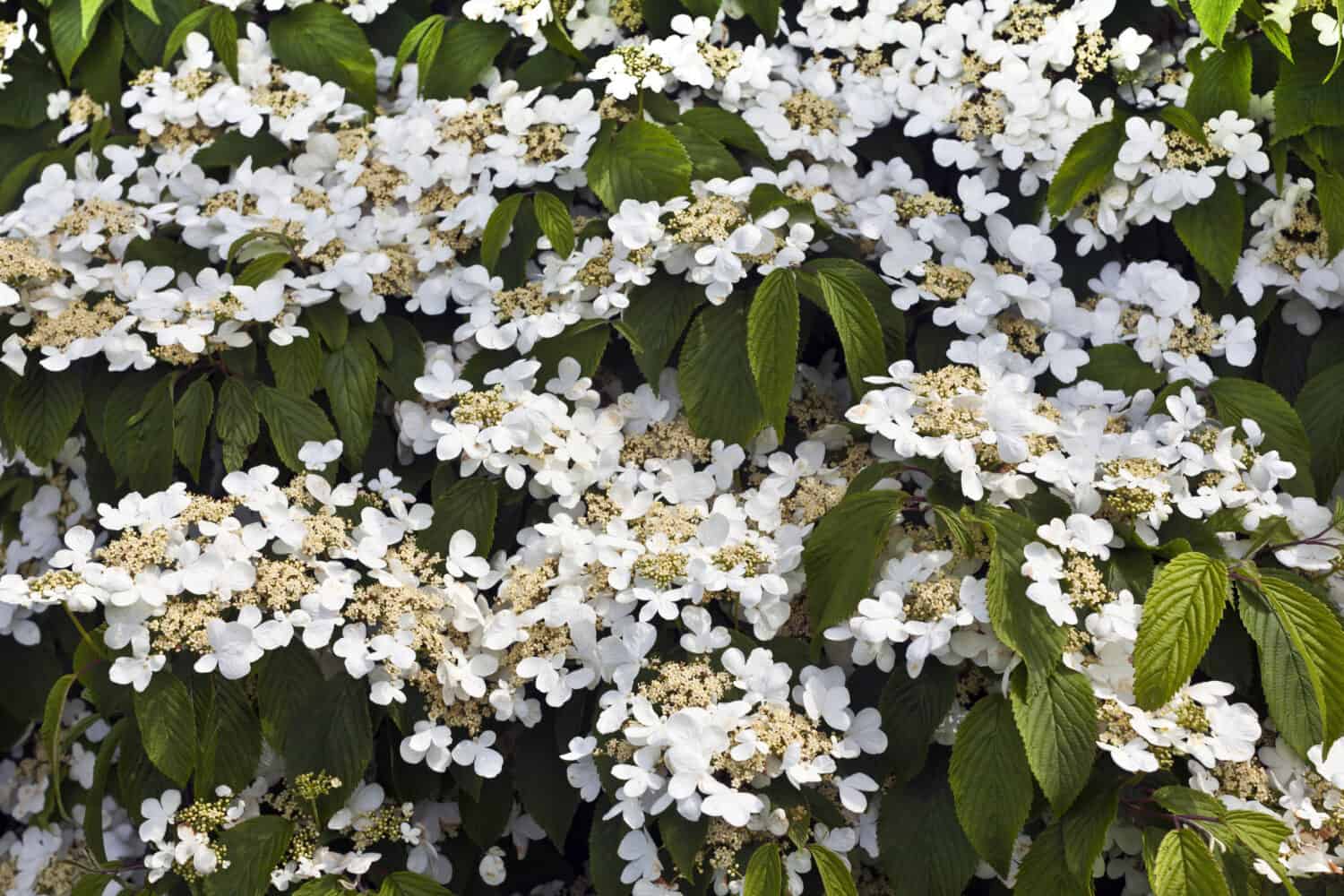
Hobblebush is a scraggly-looking bush with berries that become dark and wrinkled as they ripen.
©Debu55y/Shutterstock.com
The hobblebush provides coves and a food source to many Black Mountains inhabitants, such as; the black bear, elk, deer, butterflies, caterpillars, and others. The leafy plant has roots that extend from branches and connect with the soil causing people to trip over them. Native Americans used the hobblebush to treat migraines and breathing issues.
White Oak (Quercus alba)
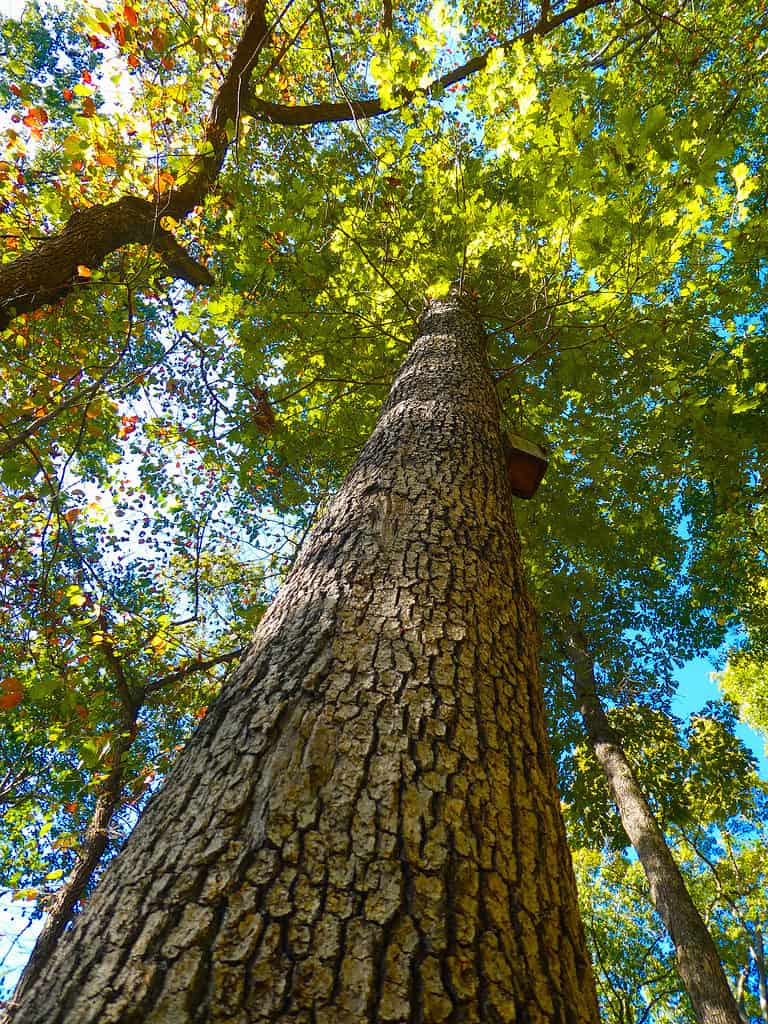
White oak trees are in the northern hardwood forest at Black Mountain’s summit.
©ForestSeasons/Shutterstock.com
The white oak is part of the northern hardwood forest and is one of the trees responsible for the beautiful fall foliage colors that people so commonly come to see. Many animals call the white oak tree home, like flying squirrels and numerous types of birds. The name is because of the color of the fresh-cut wood.
Red Elderberry (Sambucus racemosa)
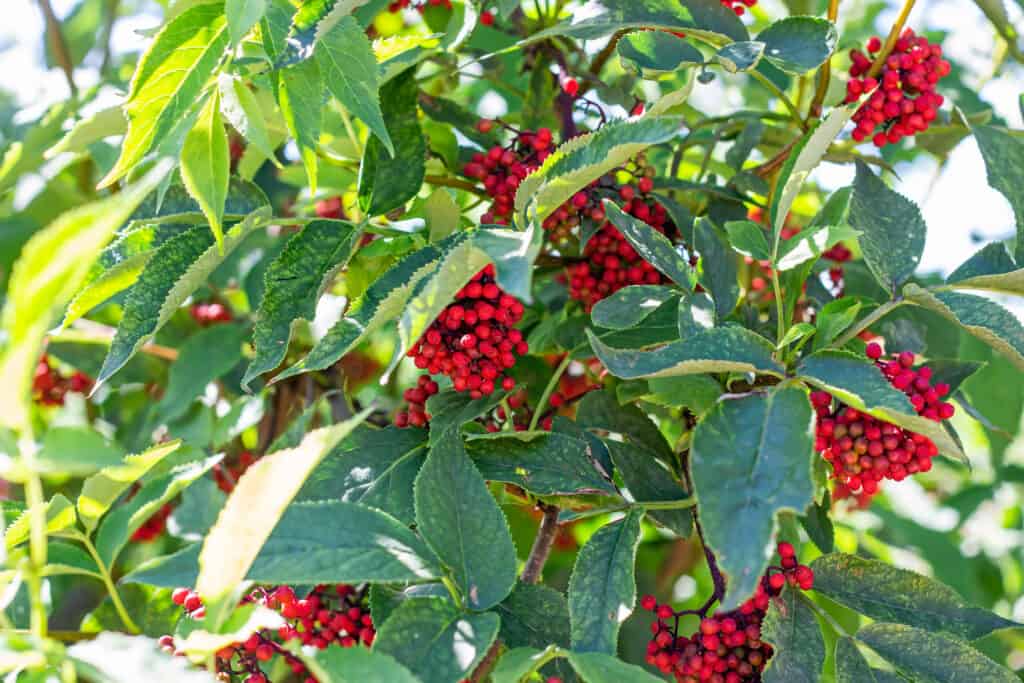
Red elderberry shrub with berries and green leaves in the summer months on Black Mountain.
©iStock.com/Ildar Imashev
The Red elderberry bush is another plant that supports the ecosystem by providing food and shelter to numerous animal and insect species. These are also perfect places for amphibians, reptiles, and spiders to hang out safely. The brush does more than look pretty to support animals, it also helps keep the ground from getting too hot, which would harm the animal and plant life.
FYI
Q: Can you hike to the top of Black Mountain?
A: Yes, it is approximately a 2.5-mile hike to the top of Black Mountain. You can also reach it on bike by utilizing a dirt road by Hilltop Community Park.
Q: What town is Black Mountain located in?
A: The Black Mountain, part of the Cumberland Mountain Range, is in Harlan County, and the nearest towns are Lynch, Kentucky, and Appalachia, Virginia.
Q: What is the Cumberland Plateau made up of?
A: Mostly, the plateau is made up of sandstone, siltstone, coal, and shale and formed during the Pennsylvanian Period.
The photo featured at the top of this post is © Photo by Matt Wasson, Appalachian Voices. April 18th, 2010, iLoveMountains.org, CC BY 2.0, via Wikimedia Commons – License / Original
Thank you for reading! Have some feedback for us? Contact the AZ Animals editorial team.



